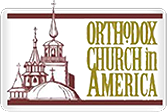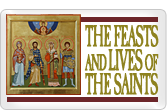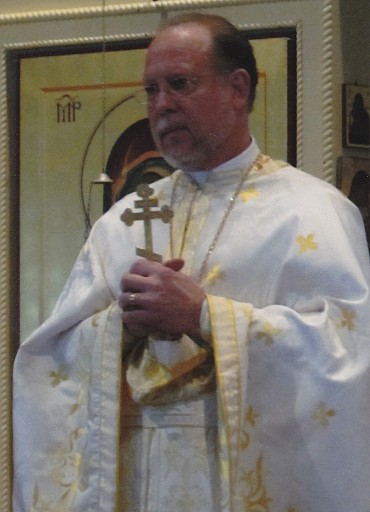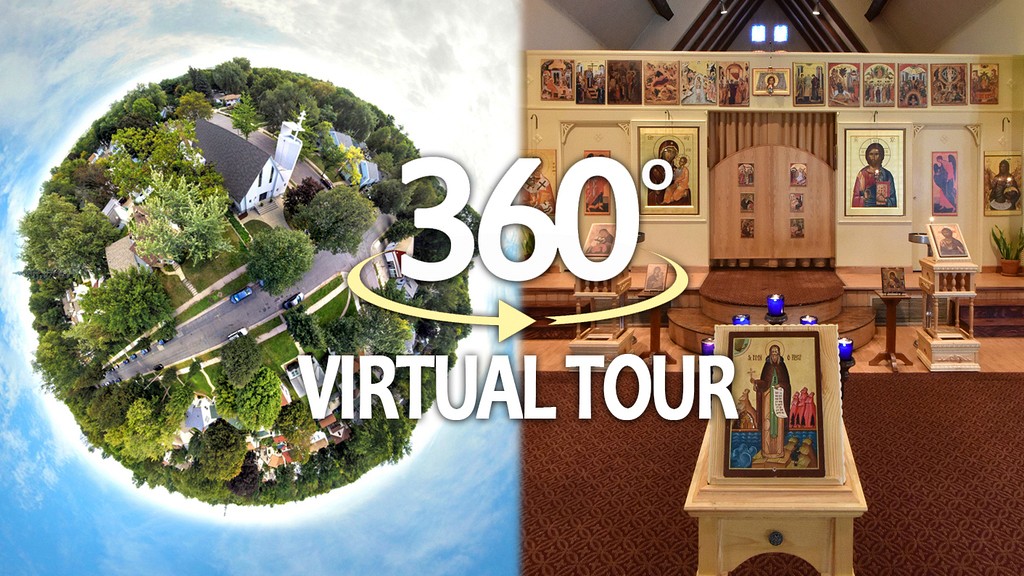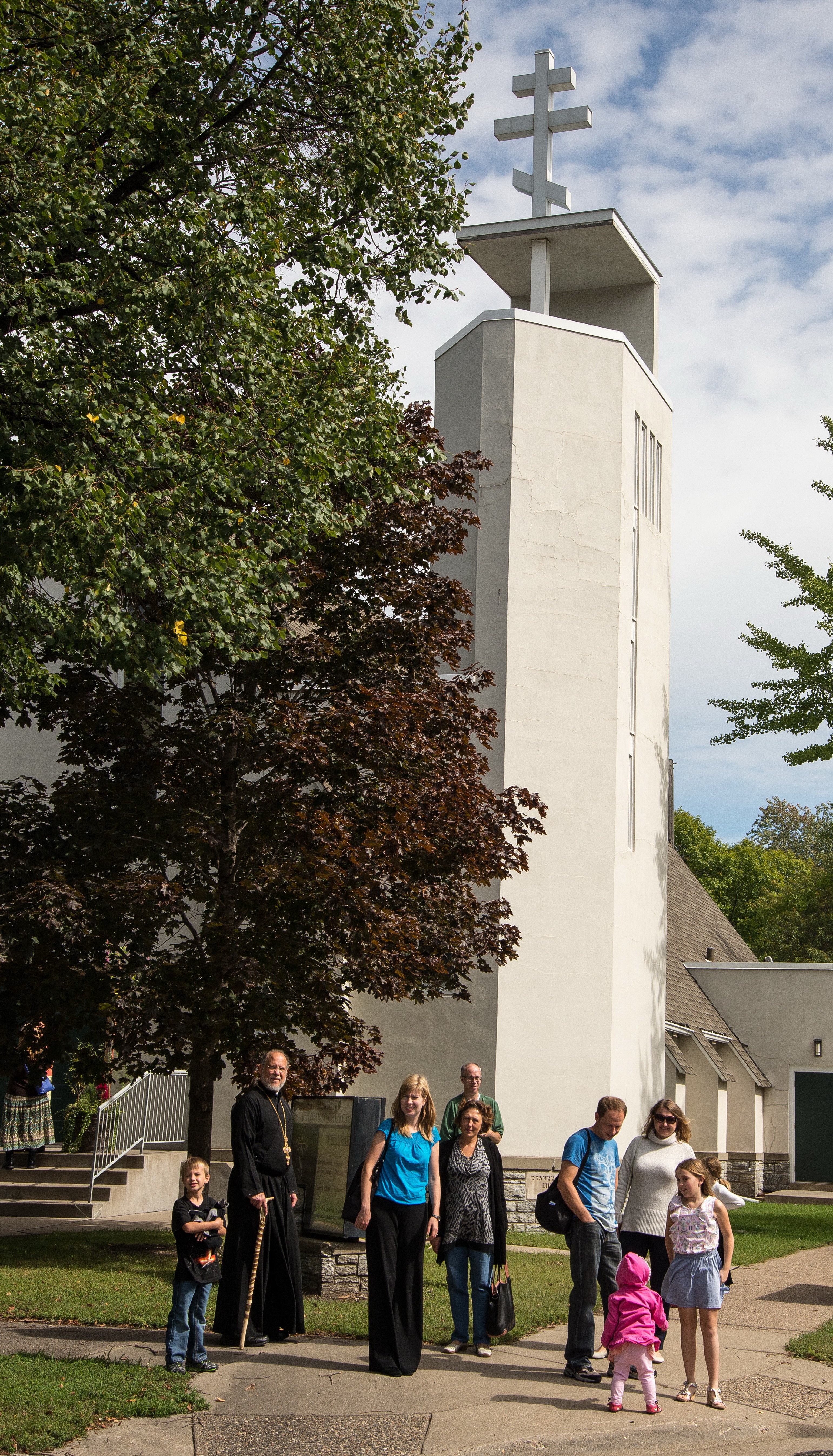Galatians 3.23-29
Luke 7.36-50
Hebrews 9.11-14
Mark 10.32-45
On this the fifth Sunday of Great Lent, the Church honors the memory of St Mary of Egypt. She lived in the sixth century. She is commemorated on April 1 as well. We know her story from St Zosimos, the hieromonk who encountered her in the desert beyond the Jordan. In years past, we have given the fifth Thursday evening of Great Lent to reading her story from the Synaxarion. It took us a little over an hour to read her story. None of us who attended the reading of her story left unmoved.
Her story is an icon of the Christian Faith, of Great Lent and Holy Pascha. Mary of Egypt was a wanton harlot from the age of 12; she was antiquity’s version of a ‘porn star’. She confessed to St Zosimas when he encountered her in the desert: ‘I am ashamed to recall how I ruined my maidenhood and, then, unrestrainedly and insatiably, gave myself up to sensuality.’ She lived, she confessed to St Zosimas, in that ‘vile condition’ for seventeen years.
And then, one summer, she fell in with a crowd going to Jerusalem for the Feast of the Elevation of the Cross. When she approached the church, however, an invisible force prevented her from entering through the doors. Several times she fought to enter the Church; each time she was repelled and found herself standing in the courtyard. Exhausted, she went aside to stand in a corner of the porch.
And then, with great difficulty, she began to understand why she was barred admittance to see the life-giving Cross.
The word of salvation gently touched the eyes of her heart, and she stood, weeping. And then she saw above her the icon of the Theotokos, and she prayed: ‘Rightly do I inspire repulsion and disgust before thy virginal purity. Help me for I have no other help. Permit me to see the venerable Tree upon which the God who was born of Thee shed His Blood on the Cross for the redemption of sinners, even for me, unworthy though I am. I will never again insult and defile my body by the impurity of fornication. I will renounce the world and its temptations, and I will go wherever Thou should lead me.’
She told St Zosimas: It was as if she acquired the fire of faith as a kind of hope and confidence in the mercy of the Theotokos. She went again and merged with the crowd that was pushing its way into the temple. She was possessed with trembling and was almost in delirium as she drew near the doors. But now, no one seemed to thwart her, no one hindered her entry into the church. It was as if the same force that before had prevented her now cleared the way for her. She entered without difficulty and prostrated herself to the floor before the life-giving Cross, and she worshipped the LORD.
When she came out of the Church, she returned to the icon of the Theotokos in the courtyard, and she heard a voice from on high saying: ‘If thou wilt cross the Jordan, thou shalt find a great rest.’ ‘O Lady,’ she cried, ‘Do not forsake me!’ and with those words on her lips, she set off on her journey to the Jordan.
For seventeen years she was in the desert, alone, in fasting and prayer, fighting wild beasts, mad desires and passions. The demons also were tempting her. Often, she missed the meat and fish she had enjoyed in abundance in Egypt. She regretted not having wine to drink, which she loved so much. She was disturbed greatly by a mad desire that egged her on to sing satanic songs she had once learned. When such desires entered her, she struck herself on the breast and reminded herself of the vow she had made to the Holy Theotokos. In her thoughts, she would return to the icon of the Mother of God who had received her, and she cried out to Her in prayer, imploring Her to chase away the thoughts to which her soul was succumbing. After weeping for a long time and beating her breast, a light seemed to shine on her from everywhere and to dispel her wicked thoughts, and an abiding calm would descend on her after the violent storm.
At other times, she would be assailed by thoughts that urged her on to fornication. A fire would be kindled in her soul which seemed to consume her completely and to awaken in her a thirst for embraces. As soon as these cravings came to her, she would fling herself on the earth and water the ground with her tears. Sometimes she would prostrate herself on the ground for a day and a night, but she would not rise from the ground until a calm and sweet light descended, which enlightened her and chased away the thoughts seeking to possess her. Always, she turned the eyes of her mind to her protectress, the Holy Lady Theotokos, who always helped her and delivered her. There is much more to the story; but for my purpose, I am focusing on St Mary’s account of the struggles she endured in the desert to ‘put to death what was earthly in her.’
We see in the story of St Mary of Egypt that, contrary to what many want to believe, God does not tolerate sin. He did not permit Mary as an unrepentant harlot to enter His Holy Church. St Paul says, for example, the unrighteous, fornicators, idolaters, adulterers, effeminate, sexual perverts, will not inherit the kingdom of heaven. And the LORD cries through His prophet, Isaiah: Woe to those who would call evil good and good evil. In our day, we are deceived to believe that we must coddle sin so as not to offend friends or family. But we give no thought to if we might be offending God. Does this not show that our friendship is with the world? And friendship with the world is enmity with God. (James 4.4)
But we also see in the story of Mother Mary of Egypt that God is the Judge who is all-merciful and gracious. He does not tolerate sin, but He does not destroy the sinner, but waits for his repentance when he should turn from his sin and live. And those who present themselves to Him in repentance, as did Mother Mary of Egypt, He washes and illumines them. He strengthens them against the temptation with the Light of His Countenance that fills the soul with peace. He heals them, He straightens them so that they are aligned with His Righteousness. And He even deifies them and restores them to their original beauty and makes them into saints.
We can see our original beauty in Mother Mary’s repentance freely chosen. We are not robots. We are created in the image and likeness of God. In that image and likeness, we are free to give our love to whatever god we choose. ‘Even in the depth of wickedness and the bondage of sin, a man is at liberty to turn to what is good. [St Macarios XV.36]
But this means struggle. ‘Not the moment that he hears the word of God does a man come to be of the good side’, says St Macarios. ‘You take away the man’s free will, if you say so, and you deny the existence of the opposite power, wrestling with the mind. There is need of much faith, and patience, of conflict, endurance and labor, of hungering and thirsting for what is good. Most wish to obtain the kingdom of heaven without trouble or pains or sweat, but that is a thing impossible. In those afflictions and sufferings, in that patience and faith are hidden the promises and the glory of heaven.’ (Hom V, pp. 49-51)
At our baptism, there was sown in our heart the Seed of the LORD Jesus Christ’s Holy Resurrection. But, we must choose to nurture that seed and grow it. That means fighting to put to death our love for the world and the flesh, as did St Mary of Egypt, so that we will not be destroyed with our sins but be restored to our original beauty in the Glory of the LORD’s Holy Pascha! Amen!
Matthew 21.18-43
Shortly, we will venerate the Icon and sing the beautiful Hymn of Light: ‘Thy Bridal Chamber I see adorned, O my Savior; and I have no wedding garment that I may enter! O Giver of Light, enlighten the vesture of my soul and save me!’ What is the Bridal Chamber? What is the wedding garment?
Do you know that your Holy Baptism, when you were united to Christ in the likeness of His death and resurrection, is the Spiritual Marriage of the Church? Raised from the Font, the heavens were opened to you. You were clothed in the Robe of Light, which was Christ Himself. This is the ‘wedding garment.’ When you drew near the Chalice in the fear of God, with faith and love, you partook of the Marriage Feast of the Lamb.
From the moment of your baptism, when heaven was opened to you, have there not been moments in the worship of the Church when the beauty of the Church’s hymns and prayers, the fragrance of her incense, the serene countenance of the holy icons gazing down on you, the spiritual nobility and majesty of the Divine Liturgy, seized your soul and opened to you, if only for an instant, a spiritual Beauty not of this world, and there stirred within you, as it did in Solomon, a visceral love for that Beauty and a longing to make the Wisdom of God your spouse? (Wisd 8.2)
Might this be a vision of the bridal chamber that was opened to you at your baptism?
‘Thy Bridal Chamber I see adorned, O my Savior! And I have no wedding garment that I may enter!’ As Lazarus was clothed in grave clothes, soiled and stinking from his being four days in the tomb, do we not see, if ever a vision of the bridal chamber is opened to us, that we have no wedding garment? Our garments are soiled and stinking grave clothes.
The wedding garment that clothed us in our baptism is Christ the LORD. The LORD, says the Psalmist, is my life and my salvation. And St Paul says, Christ is my life. Christ Himself says to Mary and Martha: I am the Resurrection and the Life.
From this, we can see that the garment is an image of the life we are living; and there are two garments, two lives we may choose to live or choose to put on as we choose to put on a garment. There is the garment of the life of this world that is passing away, sewn with threads of corruption spun from the passions, from the lust of the eyes, the lust of the flesh, the pride of life, from covetousness, which is idolatry. Its patterns and designs are cut out from the lustful thoughts and impure images, the fantasies and desires that occupy the mind.
Then there is the life of Christ, the wedding garment that clothed us in our baptism. If I have no wedding garment that I may enter the sacred bridal chamber of the Heavenly Bridegroom, can you see that it’s because I have given my soul to many husbands; I have chosen Caesar to be my king; I have given myself to the idols of the passions—gluttony, lust, greed, anger and the rest—and that the garments I have chosen to wear are the grave clothes of the corruption that is in the world through lust and covetousness?
‘Despising the divine commands, my soul,’ Mother Church calls out to us at Friday Matins of last week, ‘by thine own choice, thou hast surrendered thyself to corruption. Sunk in slumber through thy many trespasses, thou hast covered with filth the garment that God wove for thee, and made thyself unfit for the wedding of the King. Therefore, cry to the Savior: Tear in pieces my sackcloth and clothe me with gladness.’ (LTS 306)
You have chosen to come to this Bridegroom Matins service. You have chosen to come into the presence of the Bridegroom. You have chosen to draw near the Bridal Chamber; and the Bridegroom comes to us in our filthy grave clothes as He came to Lazarus in Bethany. I think we may say that in the beauty of these Bridegroom Matins, we hear Him crying to each one of us: ‘Come forth!’ Rouse yourself in the tomb of your heart. Hear, feel, the Bridegroom’s voice calling to you. Leave the grave clothes, the garment of this worldly life behind you. What keeps us from putting on the garment of the Savior’s divine commandments? Is it not our own choice to keep wearing the grave clothes of this life? I love those who love me, says the Bridegroom. Those who seek me diligently will find me! Nothing prevents us from choosing to heed the Bridegroom’s call, to rise up and come forth in the repentance of a broken and contrite heart, that the Bridegroom may illumine the vesture of our soul and save us and receive us, clothed again in the wedding garment of our baptism, into the Bridal Chamber of His Holy Resurrection. Amen!
Behold the Bridegroom comes at Midnight!’ Midnight is that ‘instant’ when, ‘in the twinkling of an eye,’ (1 Cor 15.52) the old passes away and the ‘dead are raised incorruptible, and we are changed.’ This change doesn’t just happen. It happens because the Bridegroom comes at Midnight and consummates His union with us, the children of flesh and blood, in the ‘bridal chamber.’ But the Church shows the Bridegroom consummating His union with us in the tomb. For there, having shared in our conception and birth through His Virgin Mother (Gal 4.4), He now shares in our death (Heb 2.14) in the flesh He received from Her, and it is in that instant that ‘we are changed.’
We find the divine mystery of Midnight, then, in the bridal chamber; and we find the bridal chamber in that ‘point’ in our inner man where we are dead. The bridal chamber, that is to say, is found in our heart, ‘for the real death is within, in the heart, and is concealed, and it is the inner man that perishes.’ [Macarius Hom XV.39, 125]
If the bridal chamber is in the heart, then it is in our true ‘self’; for ‘the heart is deep, beyond all things, and it is the man.’ [Jer 17.9] In the bridal chamber, then, we come upon our true self as the image of God. In this image, we yearn to attain to the likeness of God. And this character of the imago Dei which, as Origen wrote, constitutes our very essence, itself reveals that, by nature, we yearn to be one with the Bridegroom in the bridal chamber of our heart; but if Christ is Himself the Image of God in whom we came to be and in whom we move and have our being, then we are given to see that the bridal chamber of our heart comes to be and has its essence and movement from outside itself, in ekstasis, in the Bridal Chamber of the LORD Jesus Christ our God and Savior.
Illumined by the light of this doctrine of the Church, we begin to know ourselves. We see that the essential movement of our heart is the erotic yearning to belong not to ourselves but to the Bridegroom who comes at Midnight.
And so, when the mind that has caught the fragrance of the Bridegroom in its heart learns that the Bridegroom is coming at Midnight, it rouses itself. It hastens to descend into the bridal chamber of the heart to cry out: ‘Holy, Holy, Holy art Thou, O God! Through the Theotokos, have mercy on me!’ For the soul, if she only knows about God in her head, she is still dead and her heart is still stone. The soul who longs to live is the soul who longs to know God directly; but ‘there is no direct knowledge of God without an exceedingly great love, and such love does not come from the head. It must come from the heart.’ [Art of Prayer 20] And so the soul hastens to descend with her mind into the bridal chamber of her heart, for she longs to receive Him and to cleave to Him, to become bone of His bones and flesh of His flesh, so that it is no longer she who lives but the Bridegroom who lives in her.
And the Bridegroom comes. He comes to us in our own flesh and blood through the woman [Gal 4.4]. He comes to us in the Bridal Chamber of the All-Holy Virgin’s sacred womb, in the inmost sanctuary of His Living Temple. Knitting Her pure blood into the ‘schema,’ the ‘garment’ of man [Phil 2.8], He clothed Himself in our flesh and blood and was no more ashamed to call us ‘brethren.’ [Heb 2.11]
And when the soul darkened and weighed down by her many sins, learns that He has come into the ‘house’ [Lk 7.37ff.] of her own flesh and blood [Heb 2.14], she comes to Him with an alabaster jar of perfume, and she stands behind Him weeping. She wets His pure feet with her tears and wipes them with her hair. She kisses them, she pours perfume on them, and through her tears, she prays to Him softly: ‘Thy bridal chamber I see adorned, O my Savior; but I have no wedding garment that I may enter. O Giver of Light, enlighten the vesture of my soul and save me!’
And the Savior, ‘spellbound as it were by goodness, love and longing, relinquishes His utter transcendence’ [St Maximos Philo 281] to the point of death on the Cross. Partaking of our death, the Bridegroom breathes out His Spirit on the Cross [exepneusen, Lk 23.46] and destroys the death that separated us from His love in the bridal chamber of our heart;’ [Heb 2.14-15, Rom 8.39]. His Body was ‘placed in the tomb,’ the Tomb was ‘changed’ into the Bridal Chamber, ‘and the Sabbath dawned,’ says St Luke [epephosken, Lk 23.54]. And in the Bridal Chamber of the LORD’s Tomb, the soul was enlightened, and the heart that before was a tomb sealed off by a stone was ‘changed’ in that instant into a bridal chamber and into a heart of flesh, a living heart!
The wedding garment? It is Christ Himself, whose Light we put on when we were raised from the Font, having united ourselves to Christ in the likeness of His death and resurrection. Can you see, then, that the Baptismal Font is the bridal chamber? And can you see that the Bridal Chamber is the Church? For the Church is Christ’s Body that He received from the pure blood of the Virgin, and in this Body, we are fashioned anew as children of God in the mystery of His Sabbath Rest, in the Tomb of our death that has received the Body of Him Who Is the Resurrection and the Life. When we pursue the Bridegroom in the baptismal Font, we receive His Seed into our dead, stony heart, and in that instant, our heart is ‘changed’ into a heart of flesh, a living heart; and we are ‘changed’ from children of blood born of the desires of the flesh into children of God born from above in the Love of the Holy Spirit.
From an ancient Christian text, we come upon this ancient biblical rubric of the Church: ‘By striving in the visible Church, we enter the invisible Church of the heart and the invisible Church of Heaven.’ (Liber Graduum XII) In the coming week, on the loom of this biblical rubric, we will weave the sights, sounds, movements, smells, all the elements of creation, both visible and invisible, into a wedding garment that can be seen, heard, smelled, and touched with the bodily senses. Who would not want to be clothed in this wedding garment who has caught the fragrance of the Bridegroom? For ‘He is the Beautiful and the Good whom all things seek at every opportunity, and there is no being who does not participate in Him, and He attracts the [erotic] desire of all who are drawn towards Him, and He thirsts to be thirsted for, He longs to be longed for, and He loves to be loved!’ [Philo II 280-81]
And if we would clothe the hidden man of the heart with the death of Christ made visible for us in the rites of Holy Week, then would we come invisibly into that ‘Midnight’ when the Bridegroom comes, and we are changed. We become like the children with the palms of victory. They are the emblems of the Cross of Christ our King. And on Pascha Night, we follow, mystically, our King who goes forth from the Tomb like a Bridegroom in procession. He is raising us from our graves and bringing us to our own land into the Jerusalem on high as His prophets foretold. [Eze 37.13-14]
For, if we have received into the bridal chamber of our heart, in the sacramental mysteries of the Church, the Seed of the ‘heavenly man,’ then we carry the Bridegroom’s death in our mortal body. [2 Cor 4.10] That is, we carry the Bridegroom’s love in our body—for His death is the supreme manifestation, the final Incarnation of His extreme humility and compassion in which He created the world, and in which He recreated it when we had fallen. And if we tend that Seed and cultivate it through the ascetical disciplines of the Church, the Cross of Christ the Church gives us to take up if we want to follow Him—for they are the ‘flower of abstinence that grows from the wood of His Cross’ [LT 231]—then yearning for the Bridegroom begins to grow in us into a tree of life, and love for the Bridegroom begins to reign in our mortal bodies. We tend that Seed by taking up the ascetical disciplines of the Church, our cross, our ‘palm of victory.’ By the Grace of the Holy Spirit that shines in them, we strive to be obedient to sin and its carnal desires no more. We strive to lose our life for His sake; that is, in our love for the Bridegroom, we now present our bodies to Him as instruments of righteousness and no more to sin as instruments of unrighteousness. [Rm 6.12-13] Now the Bridegroom’s death is swallowing our death; now our mortal and perishable bodies are putting on the immortal and imperishable ‘wedding garment’ of the Bridal Chamber; now the Life of the Bridegroom begins to manifest itself even now in our mortal bodies [2 Cor 4.10]. It manifests itself in the hope that begins to form in us from the Seed of God’s love poured out into our hearts in the Bridal Chamber of His Holy Church. This is a real and living hope; and it is the pledge of our inheritance, which is our own land that is not of this world. It is the kingdom of heaven with all its glorious riches, found through the doors of Midnight in the deep, beyond all things, in our deep heart, in the mystery of the bridal chamber. Amen!
